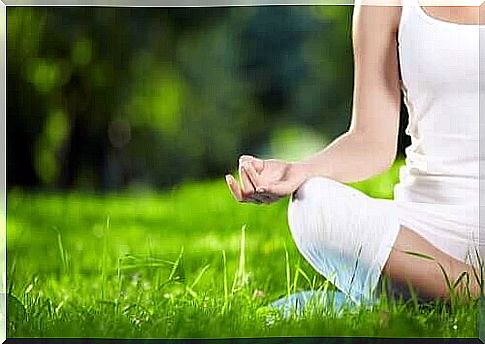Mindfulness Techniques And Strategies

Mindfulness is the English translation of the Pali word “sati,” which actually means something along the lines of “awareness, attention, and memory.” In today’s article, we ‘ll show you two important mindfulness techniques and strategies.
Professor Jon Kabat-Zinn is a pioneer who has brought mindfulness to the West, especially in a clinical sense. Among other things, he says: “ Mindfulness means paying attention in a certain way: on purpose, in the present moment, and without judgment. ”
In other words, you must radically accept the present moment, without making any judgments. That means you are open to experiencing and living with your feelings, mental events and circumstances, whether they are positive or negative. The goal is to expose yourself to the negative side of things, without taking any direct action against the experience.
This is very similar to the Buddhist idea of detachment. Buddhists believe that you can disconnect yourself to observe your experiences, thoughts and emotions from afar.
Some of the most important things you can do from mindfulness are:
- do not judge
- be patient
- have a “beginner’s spirit”
- don’t be influenced by your past experiences
- to be confident
- don’t take too much hay on your fork
- accept or see things as they really are

Mindfulness techniques and strategies
Bishop (2002) provided a detailed list of some of the components of mindfulness, which we will discuss in more detail below.
Self-regulating your attention
This strategy involves keeping your attention on your immediate experiences. It means you’re not trying to take matters into your own hands. Doing so will help you better understand the things that are going on in your head right now.
As a result, you will also need to work on a number of techniques and skills, such as sustained attention or the ability to stay focused for a long time. You also need to train yourself to change your focus and focus on the breath once you have untangled your thoughts, feelings, and sensations.
You must also learn not to follow or develop thoughts, feelings or sensations. In other words, you have to avoid getting caught up in it. You just have to observe them and return your attention to your breathing.
This is one of the mindfulness techniques that really involves the concept of the “beginner’s mind”. That’s a way of thinking that means focusing on direct, pure attention. You have to take in the things you see around you as if it were the first time you see them.
It means that you should not look at these things through the filter of your experiences, beliefs or expectations. Instead, you should focus on getting rid of that baggage.
Orient yourself in the direction of your experience
The key here is to keep yourself curious. You need to open your mind so that you can detect every thought, feeling, and sensation that arises. You must be willing to let yourself think, feel and experience things without trying to avoid things.
In other words, you should approach your experiences with a curious attitude, whether they are emotionally positive or negative. You have to radically accept experiences for what they are.
Other mindfulness techniques and strategies include focusing your attention on the present, radically accepting things without judgment, and freely choosing active pursuits such as breathing or an activity.

The benefits of mindfulness
These mindfulness techniques and strategies can help you better focus your attention on what you want. It’s a great way to combat the robotic mindset, which is characterized by automatic negative thoughts popping up in your head without you actually realizing it.
Since mindfulness helps people break out of that robotic routine, it can help reduce the physiological and somatic symptoms of various health conditions. It activates your parasympathetic nervous system. For example, it can help you relax even more than traditional relaxation exercises can.
A number of neuroscientific studies suggest that it may also alter brain functions such as perception, superior cognitive processes, and emotional regulation (Cahn and Polich, 2006).
Finally, another amazing benefit of mindfulness is that it improves both emotional and physical health. All the evidence points to the fact that mindfulness is related to greater flexibility, which has a clear positive effect on your health. So what are you waiting for? Give mindfulness a try!









